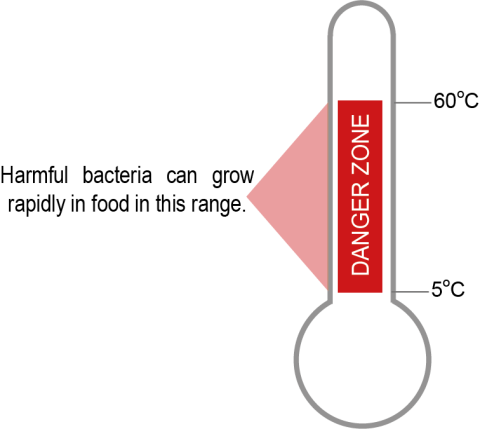As a food business you need to keep potentially hazardous food at certain temperatures to make sure it stays safe to eat.
Potentially hazardous foods
Potentially hazardous foods are foods that need to be kept at certain temperatures to minimise the risk of dangerous microorganisms or toxins. They include:
- raw and cooked meat or poultry
- foods containing eggs (cooked or raw)
- dairy products like milk, cream and fresh custard
- seafood
- sprouted seeds (like beans and alfalfa)
- cut fruit and vegetables
- cooked rice, and fresh or cooked pasta
- sandwiches, pizzas and sushi.
Keep it cold, keep it hot, or make it quick
If you need to have the food at temperatures between 5°C and 60°C for any time (for example while preparing a meal on a kitchen bench) then this should be done as quickly as possible.
Food must be kept under temperature control at all other times including when it is received, stored, displayed or transported.
Safe temperature guide
Generally, potentially hazardous food must always be at 5oC or colder, or 60oC or hotter to keep it safe.
You can only keep food at another temperature if you can show it stays safe at that temperature.
Checking the temperature
Use a thermometer to check the temperature of food to make sure it's at a safe temperature.
The best way to check is to use a probe thermometer and insert it into the thickest part of the food.
If you can't insert the thermometer because the food is packaged, then lay the thermometer lengthwise along the package, or use a scanner-type thermometer to check the food's temperature.

